Why do the leaves of a rose turn yellow and what to do?

Most flower growers are faced with the fact that grown garden roses turn yellow and fall off their leaves in June-July. In the article, we will tell you why this happens and what to do to prevent this from happening in the future.

Unsuitable conditions
Yellowing of the foliage of a garden rose indicates bush starvation or mistakes made in leaving. If suddenly, in the midst of the formation of bushes, the leaves of the plant turn yellow, you need to reconsider the conditions.
Wrong location
The plant is thermophilic. It is important to pay attention not only to climatic conditions, but also to location. If possible, the bushes should be transplanted to more favorable soil. Often the reason lies in the choice of a shaded area on heavy soil. Rose is a light-loving plant. If improper conditions are created for her, she begins to wither.
Initially, the lower leaves begin to lose their green color, which practically does not get sunlight. In the future, this applies to the entire plant. The only solution is to remove objects and overgrowth obstructing the flow of the sun.
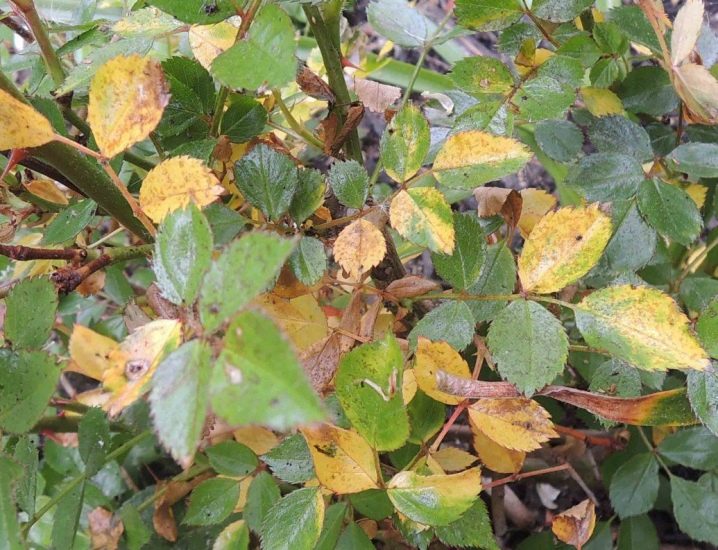
However, if the region has had a cloudy summer, the situation will not change.
Lack of nutrients
If a rose is planted in a well-lit place, but its leaves turn yellow and fall off, this is a clear sign of starvation. The culture lacks macro- and microelements. The main macronutrients are potassium, phosphorus, nitrogen. Trace elements - magnesium, manganese, iron. The lack of any element can be determined by its characteristic features.
Nitrogen
With a nitrogen deficiency, the color of the leaf plates becomes pale. Then the leaves turn yellow and fall off. The stems of the rose become weak and crooked. This phenomenon occurs when a plant is planted in soil with a lack of nitrogen. It is urgent to water the plant with clean water, then add top dressing. The type of fertilizer can vary.
- When using urea (urea), take 2 tbsp. tablespoons of the substance per 10 liters of water.
- When potassium (ammonium) nitrate is used, dilute 2 tbsp. tablespoons of the drug in a bucket of water. The amount of fertilizer per bush is 2-3 liters.
- You can dilute cow dung at the rate of 1 kg per 10 liters of water, then insist and water under each bush in a volume of 2-3 liters.
- If poultry manure is used, the concentration is reduced to a ratio of 0.5 kg per 10 liters.
- Nettle infusion is also suitable as a top dressing. It is insisted for about a week, then diluted with water in a ratio of 1:10.

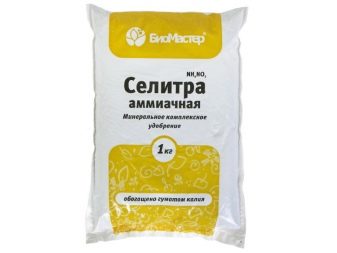
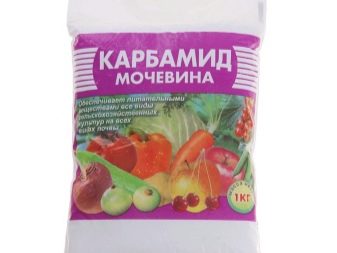
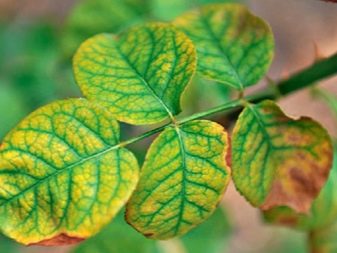
Potassium
With potassium starvation of the bush, yellowing and drying of the foliage along the edges are noted. In this case, the inside of the leaf remains green. The color of young foliage becomes reddish. This is typical for plants planted on sandy soil. The solution to the problem will be the introduction of complex fertilizers.
- The easiest way to treat the plant with wood ash. It is introduced into the trunk circle with loosening of the soil in the amount of 2-3 handfuls.
- If potassium sulfate (potassium sulfate) is used, the drug is diluted at the rate of 2 tbsp. spoons in a bucket of water. It is also scattered dry into the trunk circle with loosening (2 tbsp. L).
- Potash nitrate treatment is carried out in identical proportions.
- When potassium magnesium is used, it can also be diluted with water, or poured into the trunk circle in a dry form (2 tbsp. L) with loosening.
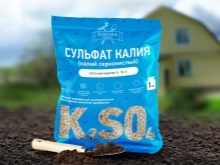
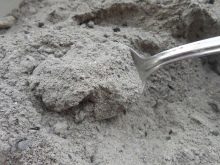

Phosphorus
Phosphorus deficiency is manifested by curvature of the stems, crushing of young foliage, reddening of the lower leaves. They dry and fall off.If the reason lies precisely in this, you need to add superphosphate or potassium sulfate to the soil.
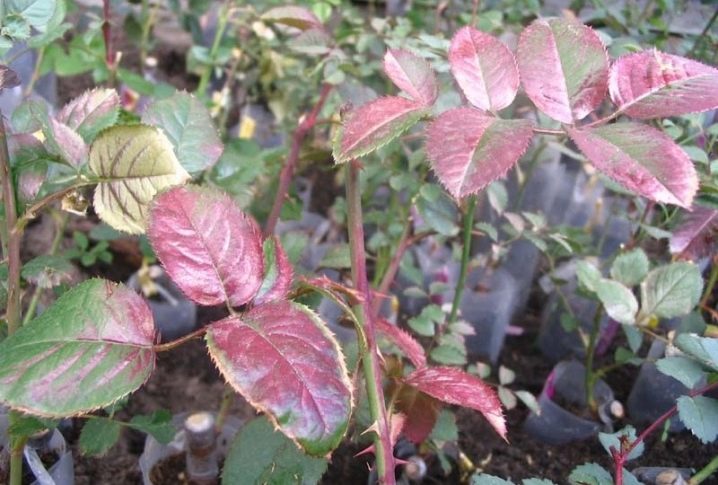
Magnesium
When the bushes experience magnesium starvation, the central leaf veins die off. The middle of the adult leaf plates turn light yellow, the edges remain green. The leaves of a bush rose are covered with reddish spots, dry up and fall off at the beginning of summer. With these symptoms, you need to use magnesium sulfate (2 tablespoons per 10 liters of water).

Iron
This problem is typical when planting outdoor plants on sandy soil. Young leaves of a rose bush develop chlorosis. A characteristic feature is green veins and a yellow leaf blade. Along with yellowing, reddening of the leaves and drying of the tips can be observed.

To eliminate the cause, it is necessary to reduce the percentage of lime in the ground.
To do this, it is worth fertilizing the soil with iron vitriol or using the preparations "Ferovit" (1 ampoule for one and a half buckets of water), Multi Tonic, Toprose (in accordance with the instructions on the package).
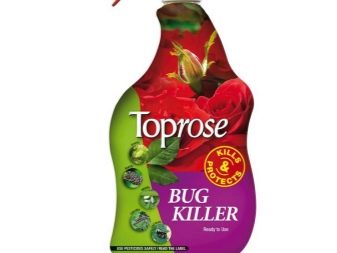

Manganese
Manganese deficiency is manifested by yellowing of old leaves. A characteristic feature is the presence of yellow stripes between the veins. This is noted on the lower leaf plates. Also, the leaves are often covered with yellow spots. To cope with the problem, you need to immediately treat the soil with manganese sulfate (2 tablespoons per 10 liters) or add Multi Tonic to it.
At the same time, it is necessary to reduce the amount of lime contained in the earth. The bush can be mulched with peat or pine needles. This will bring the alkaline medium to the normal pH value of 5-7.

Improper care
If the problem of yellowing and falling leaves in the rose garden is not associated with a lack of nutrients, it is worth reconsidering the care of the crop. Lack of light is fraught with scarcity of flowering of small buds. The yellowing and falling of the leaves of the rose grown in the garden is a natural reaction of the plant to a decrease in temperature and a decrease in autumn daylight hours. This should not be the case in the summer.
The appearance of spots, stripes, discoloration indicates the presence of pathology. If the matter is in the thickening of the planting, thinning is urgently needed. Partial crown pruning and removal of the lower leaves will help.

It happens that a climbing rose sheds foliage due to non-compliance with the watering regime. For a plant, not only waterlogging is detrimental, but also drying out of the soil. If the soil is too wet, root rot cannot be avoided. Leaves signal this by changing color and falling off. They curl, brownish spots appear on the stems.
About the same can be seen if you constantly water the bushes outside with cold water. Proper watering involves using water at room temperature. Prolonged drought is detrimental to plants. Due to water starvation, the leaves dry out from the ends. The growth and development of bushes is inhibited, flowers and buds fall off. The rose also reacts to a sharp change in temperature.
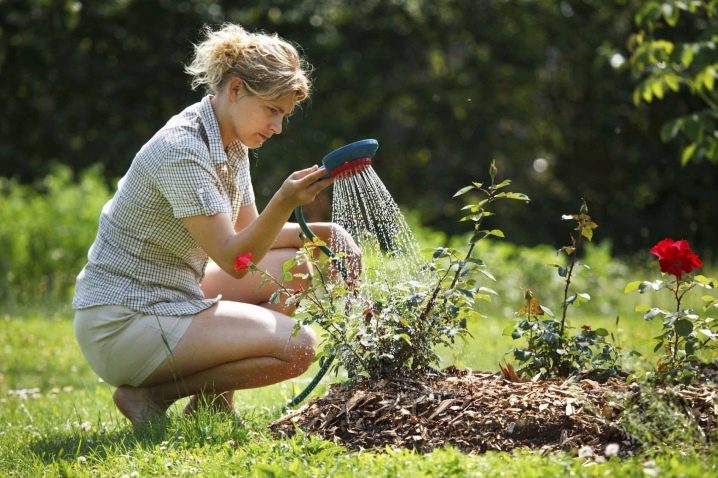
If the drop is fast, the leaf plates turn yellow in just 2-3 days. The bush loses most of its green mass.
The solution to the problem depends on its cause. We urgently need to eliminate the negative factor that caused the stress. Based on this, transplantation, watering, and shelter of the culture may be necessary. The next step of "resuscitation" will be the introduction of top dressing. This must be done correctly. An ampoule of "Zircon" is diluted in a bucket of water, each bush is treated at the rate of 1.5-2 liters. A few days later, the foliar biostimulator "Epin" is used. It is bred according to the instructions. The next fertilization is applied after 2 weeks. A preparation based on potassium humate is suitable.
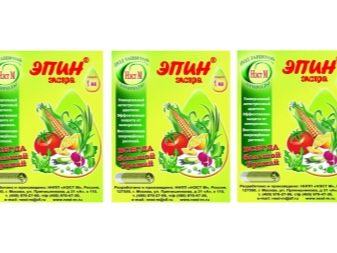
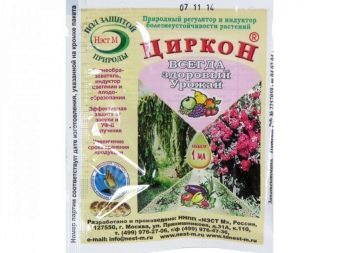
Do not water the rose bushes too often. This should be done when the upper soil layer dries out to a thickness of 1 cm. If the plant is large, the depth of the dried layer should be at least 2-3 cm. The watering regime is directly related to the growth and development rate.If the weather is too wet and rainy, it is necessary to resort to mulching the ground with sand.
Lack of moisture can be identified by two signs: yellowness and curling from the edges to the central part. In order not to harm the plant, it must not only be well watered, but also covered with a small layer of mulch after that. Thanks to this, it will be possible to retain moisture. She will not be able to quickly evaporate from the ground. Mulching and thinning are preventive measures for fungal and other diseases.
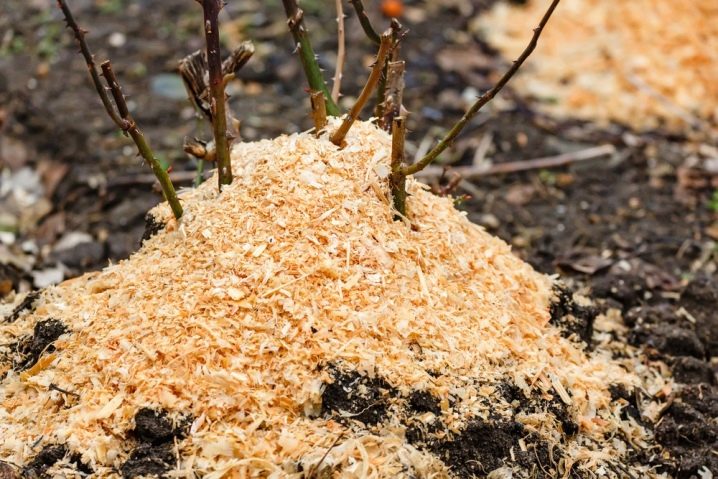
Treatment of diseases
If the cause of yellowing and falling foliage is not related to improper care and inappropriate growing conditions, you need to check the plant for diseases, fungal infections, pests. If the leaves of the rose in June-July become light yellow, dry, curl or crumble, then measures are taken to eliminate the source of the problem.
It is important to plant roses in the fall. They will have time to take root, winter well. After rooting, you need to cut off the weak branches, leaving several buds on the strong shoots.
Black spot
This disease is one of the most dangerous fungal infections. As the brownish spots grow, yellowing, folding, and falling of the leaves occur. To prevent this, you need to constantly monitor the condition of the bushes. As a preventive measure, you need to dust the bushes with ash every 2 weeks.
It is worth regularly processing the culture with a soda solution (1 teaspoon per glass). You can treat rose bushes with fungicidal agents. Suitable "Oksikhom", "Topaz", "Ridomil Gold".
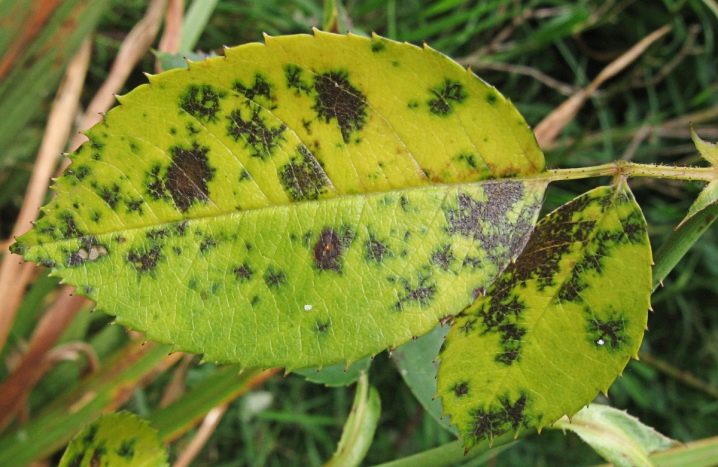
Jaundice
The cause of this disease is bacteria. The first symptom is the yellowing of the veins. After that, the yellowness spreads to the entire leaf plate. Before the leaves fall off, they will curl upward. It is impossible to cure them. The affected areas must be destroyed.
If the disease has not had time to spread strongly, you need to cut off the diseased stems. After that, you need to spray the flower garden with preparations "Fitosporin", "Sporobacterin", "Fitoflavin". Sick shoots should not be left. This is fraught with the spread of the disease to neighboring bushes.
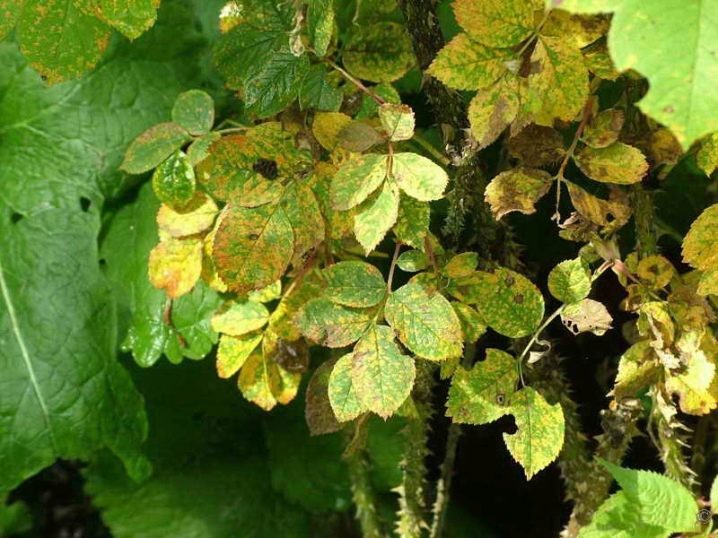
Mosaic rash virus
The first sign of this disease is the appearance of small dots and spots of a light lemon shade on the leaves. After about a week, there is a massive shedding of green mass. This viral disease cannot be treated. The affected areas are destroyed. The best preventive measure is timely and appropriate care.
In addition, we must not forget about the disinfection of garden tools. You cannot do without treating the bushes with a biostimulant drug. It is better to strengthen the immune system once every 3-4 weeks using "Epin", "Heteroauxin", "Zircon".

Bronze virus
A characteristic sign of bronze is the appearance of light green spots.... Following them, there is a change in the color of the veins themselves. The next stage is necrosis of leaf plates. Floral deformation and discoloration of the petals are minor signs. A preventive measure would be to plant plants away from tomatoes (they also have a similar problem).
Planting plants with genetically built-in immunity will be a partial solution to the problem. It is necessary to initially plant suitable varieties in the garden. For example, variants of Leonardo da Vinci, Amber Queen, Double Delight, Queen Elizabeth, Escimo are considered disease-resistant.
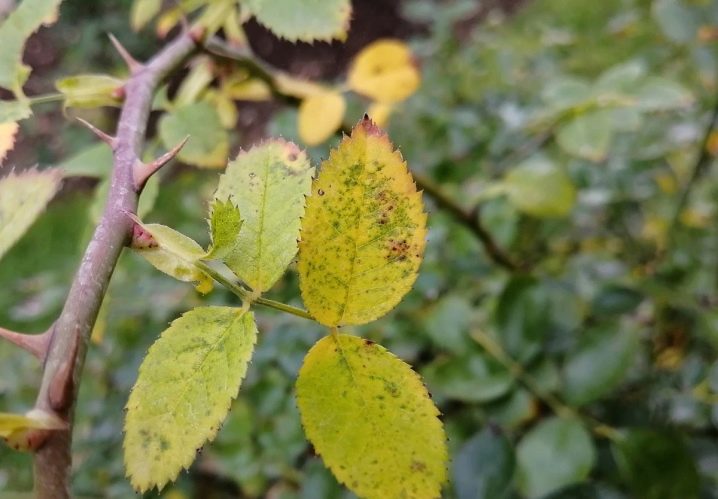
Pest control
If parasites appear on the plant, they first of all infect the leaves, since they feed on their juice. The processing method depends on the type of harmful insects.
Spider mite
These parasites are especially small and almost invisible. They are difficult to see with the naked eye. A clear sign is the braiding of the leaves and stems of the plant with a web... Whitish spots, discolored spots, yellowness and dryness are the main stages of green mass loss.
To cure the culture, it is necessary to spray the leaves with garlic infusion at least once a week.
If the treatment does not give the desired effect, they resort to several treatments with acaricides. Suitable "Vertimek", "Neoron", "Agravertin". The interval between treatments is 5-6 days.

Aphid
Tiny parasites settle on the lower part of the foliage, quickly spreading throughout the green mass, flowers, buds. Aphids dry up the juice of the leaves, piercing small holes in the plates. Deformation, wilting, dying off occurs. If the colony is small, the problem is solved by washing. This can be done with a high-pressure water jet.
You can scare off pests by planting a spicy herb with a pungent aroma. With an extensive lesion, you will have to use drugs with a wide spectral effect. Fit "Commander", "Aktara", "Biotlin".
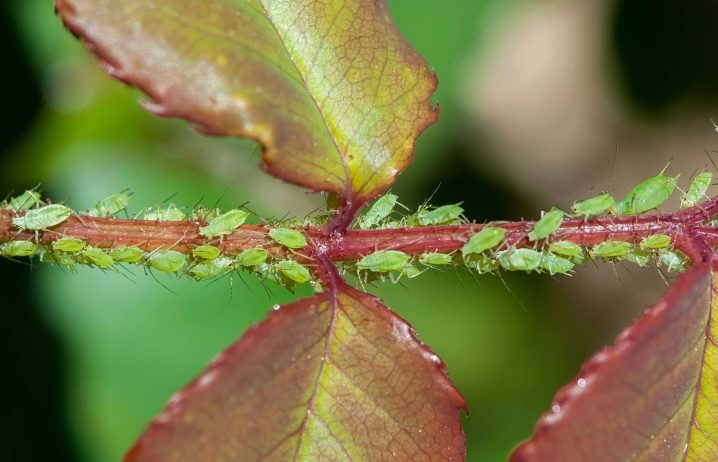
Rosaceous scale insect
It will not work to cope with this pest with a folk remedy due to the presence of a durable shell. Only chemicals will be effective. Celandine, tobacco crumbs can only be a means of prevention.
A sign of a lesion of a rose bush with a scab is the appearance of reddish-yellow spots on the foliage, which quickly turns yellow and curls up like a tube. You can destroy parasites with different drugs. The most popular for this purpose are considered Aktara, Bankol, Fufanon.
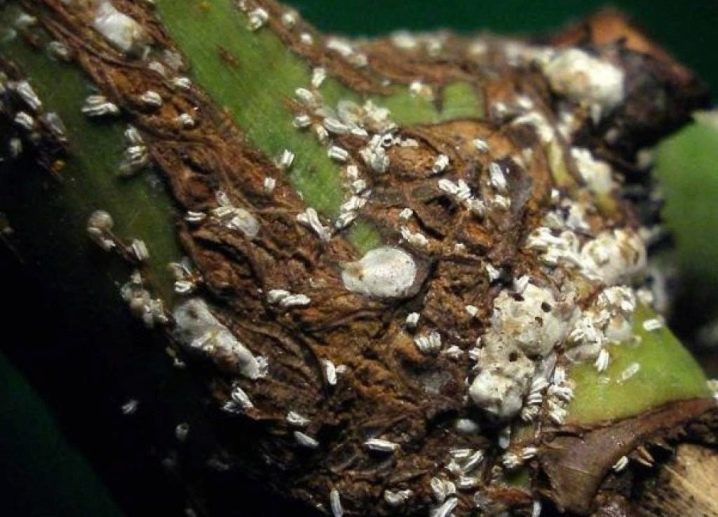
Gall nematode
This parasite prefers to settle on the root system of the plant.... The affected areas when excavated have characteristic spherical growths. If a plant is affected by a nematode, it stops growing and developing. The foliage first turns yellow, then becomes brownish, twisted. The buds are deformed.
Obvious symptoms on the ground part are already noticeable at the stage when the salvation of the bush is impossible. It remains to dig up the bush and destroy it.
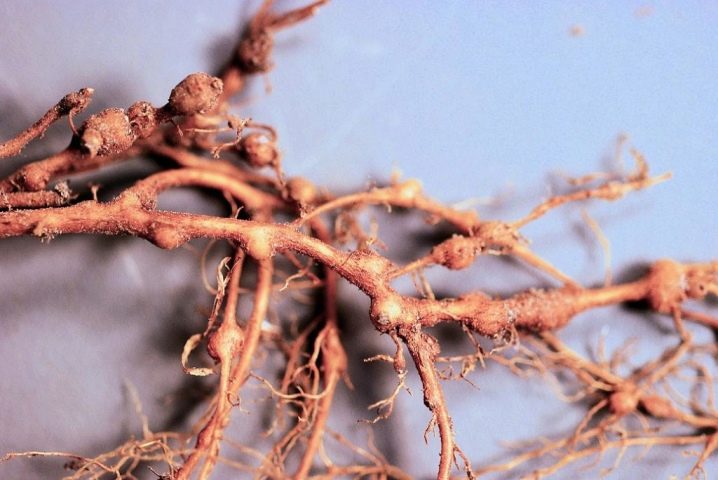

































































































The comment was sent successfully.